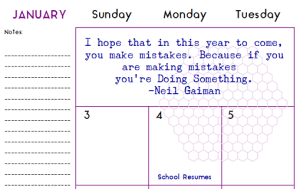For nearly four years, I taught English at a drug rehabilitation facility for adolescents receiving in-patient treatment. Last month, my program was eliminated. I’ve been trying to process my New Normal, and decide what that will look like. In the meantime, maybe some reflection will be helpful. I’ll preface this by admitting that I’m not a counselor. That wasn’t my function for these kids. So if I use the wrong terminology, or share a viewpoint that’s slightly off-base, that’s on me. Here are a few things I learned there:
- It’s not just the drugs.
In my observations, children rarely use a drug only to be intoxicated. The drug is filling some role in that child’s life that is not being met elsewhere. If a 15-year-old feels insecure, unloved, or unsafe, then when they’re high, they don’t have to feel that way.
One of the biggest focuses of these children’s treatment plans wasn’t “Drugs are bad, mmkay?” It was, “Here’s how to cope.” For a lot of my students, the drug abuse was generational. They weren’t learning appropriate coping or social skills from their parents. They were self-medicating for the larger issues at work in their lives.
- School is not the primary focus of a kid’s life.
Often, I found that my job wasn’t necessarily to teach English. I tried to do it anyway, but as with all teachers, my success wasn’t solely based on my own abilities or intentions. My job depended heavily on the conditions my students brought into the classroom. Was I teaching that day? Was I listening? Or was I simply modeling appropriate adult behavior?
My students were dealing with grown-up issues, challenging even to adults. Notably, they were doing it using adolescent or delayed functioning. They’d been parentified, abused, and neglected. Some of them were parents themselves. Many of them had overdosed multiple times. Death was a frequent topic in classroom writing or discussion. How can you make algebra relevant to a child who has witnessed real horror before the age of fifteen? And how do you do it on a bad day?
- Everyone deserves dignity.
Many of my students were used to the process of institutionalization: the scrubs, the searches, the constant monitoring. It became important to me to recognize their humanity. Call people by their requested names. Speak softly when you can. Ask instead of demand.
And I asked for that recognition in return. Most of the time, I received it. As my students were older than their years, they knew what respect was, and they appreciated receiving it.
- Teachers are experiencing trauma as well.
I became comfortable with using my sick time for mental health days. I did not learn these lessons immediately; there were some very hard days and weeks. I had days where I got out of bed and said, “I can’t.” My students occasionally had the option to take a day off. Why couldn’t I? When the knots in my stomach became too tight to unstring, I took a day off.
I recently met with a former student of mine who is studying forensic psychology. She talked to me about secondhand trauma, which accurately described my situation. The knowledge of my students’ experiences weighed on me. Add on the pressures of a pandemic, and my own life. I am guilt-free about those mental health days.
- They’re still just kids.
They are funny. They are goofy. They are creative and immature and hormonal and rude and smart. They like to draw and do crafts and play games and color. They like to show off their rap lyrics. They get really excited about space, but they’ll also argue with you about whether it’s real. They’re kind of weird. They’ll ask you personal questions (it’s important to be honest, but remember boundaries).
I would remind my readers here: these kids are in your schools too. You might not recognize them immediately. They might look like someone who sleeps in class constantly. They might look like someone who is nervous and fidgety, or angry and resentful. They might look like someone who is always having run-ins with law enforcement. And you might not know what they look like, because they’re never there at all.

You must be logged in to post a comment.